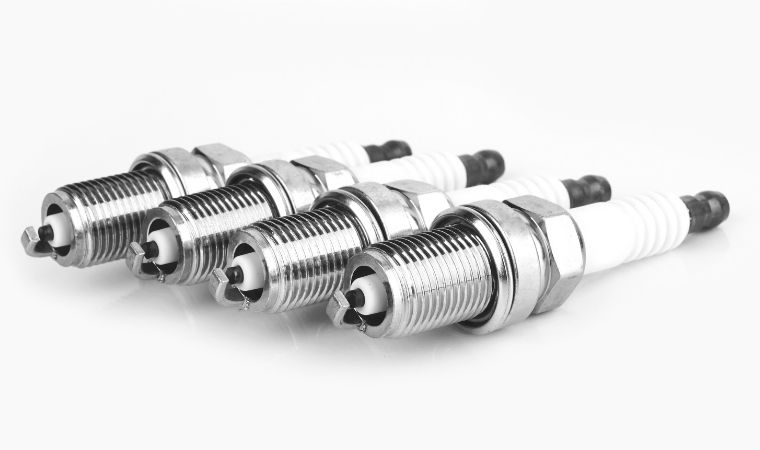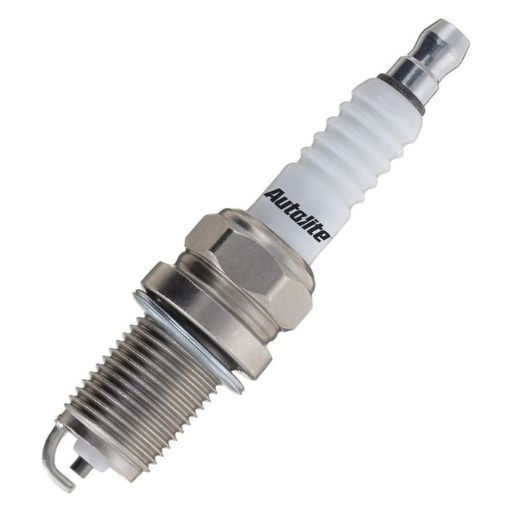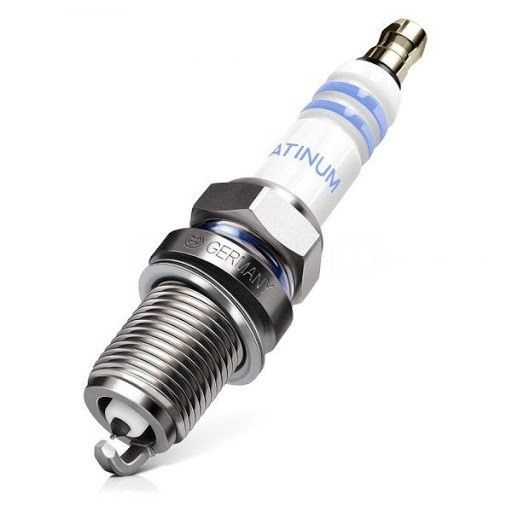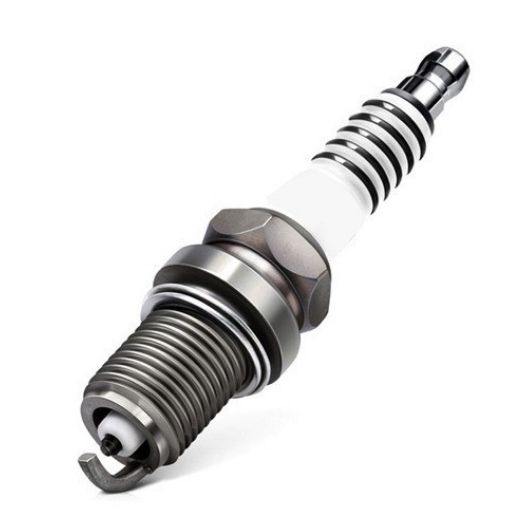So, what exactly is it? A spark plug is a mechanical component screwed into the top of a cylinder of an engine. They are basically used to ignite the fuel as it gets injected into the combustion chamber. And you can find these sort of spark plugs in any combustion engine which is gas-fueled.
A petrol engine may have one sparking plug per cylinder borehole. Plugs send electricity of high-voltage at one end to trigger a spark at another end. The spark then heats and fires the mixture of air and fuel within the chamber and creates a combustion which leads to force the car. Hence, it is known as “Spark Plugs”. So, you can easily ascertain that without spark plugs, your vehicle will not even make a hairbreadth.
Structural formation of a typical Spark Plug

The usefulness of spark plugs in a vehicle is making the layout simpler day by day. Researchers of the automobile industry are ceaselessly working on it to shrink its size so that the spark plugs can flexibly fit inside a combustion chamber. At the same time, spark plugs should look outstandingly simple to operate since it needs to hold an enormous level of energy which later turns into immense work.
Almost all the spark plugs show a feature of having two electrodes- one is at the center, and another is at the skirt. The central electrode is formed by a copper core. Copper has an excellent physical property of ample electric conduction, and faster heat transmission. And copper is unique there for this reason. However, copper is comparatively soft, and its melting point is not higher. That’s why it gets necessarily protected by a nickel-alloy cover. It makes sealed to retain thermal conductivity as well.
The other one is well-known as the Ground electrode also made of copper. There can be a platinum or iridium tip on the central electrode to thrive the performance. A tiny space between the ground electrode and the tip of the central electrode is called the electrode gap. Lately, the size of the center electrode is getting smaller than it used to be. What I mean is, these mini spark plugs will use less voltage to generate the necessary electricity flow for the ignition chamber.
Related: Best Spark Plugs
Purpose of Metal in a Spark Plug
The primary purpose of using metal in a spark plug is to channel the electric form of energy through the spark plug so that it can spark whilst go across the electrode gap. This is, however, the crucial phase where the combustion process gets started. For this reason, we can hypothetically use any metal as a spark plug that can conduct electricity. Though some metals are good conductors, the problem with those materials is overheating tendency that generally causes malfunction, and hence, the performance of the spark plugs is compromised.
The manufacturers normally choose viable and precious metals as the central electrode and the ground electrode of a spark plug. Therefore, they use metals like nickel alloy, platinum, iridium, even aluminum, and many more. These metals help a vehicle owner by rising the plug changing interval and abating the rate of misfire.
Types of Spark Plugs
The copper spark plugs are till date the most commonly seen spark plugs, however, there are certainly some other types like platinum spark plugs, iridium spark plugs, double platinum spark plugs, etc. So, mainly the types are:
- Copper spark plugs
- Platinum spark plugs
- Iridium spark plugs
- Double Platinum spark plugs
Depending on the vehicle that you drive, some have merits while some others have shortcomings. So, we have drafted a convenient list by recounting the facts, efficacy, and cost estimation. Before replacing them, please have a brief look at this.
1. Copper Spark Plugs

Copper spark plugs are the most common and cost-effective amongst all sorts of available plugs. A standard spark plug i.e. copper spark plug structures a nickel-alloy outer shield near the tip including a copper core inside it. Truth to be spoken, all spark plugs use copper as their center electrode. The ground electrode is also made of a nickel alloy.
The frame of the copper spark plugs is tangibly the widest of all listed here. That means otherwise, it has the largest thread diameter, and therefore, it will require more voltage to generate an electric spark.
Advantages
- Best suited to older vehicles before 1980 with a distributor based ignition system.
- Better for those older vehicles where they just had a basic performing engine.
- Copper is a super conductor compared to platinum and iridium.
- Copper spark plugs are fairly cheap to purchase.
- If you change them at regular intervals, they will not create you hassles.
Disadvantages
- Nickel alloy is not that hard material, and therefore, the longevity is less.
- Inefficient because it needs a larger voltage to generate an electric spark.
- These are supposed to be changed after driving every 20,000 miles.
2. Platinum Spark Plugs

Platinum spark plugs are pretty much analogous to copper spark plugs. The mere exception is that it has a platinum disc welded at the tip of the center electrode, not nickel alloy.
Advantages
- Platinum spark plugs are more durable as platinum is harder than other metals.
- The longevity of platinum plugs is better than copper and they usually last nearly 100,000 miles.
- These plugs generate much heat which helps to control and reduce the deposits of the chamber.
- It costs less than iridium spark plugs.
Disadvantages
- Neither the strongest nor the most efficient spark plugs in the market.
- Platinum plugs are recommended if you have a car coupled with an electronic distributor ignition system.
3. Iridium Spark Plugs

Iridium is roughly 6 times tougher and 8 times resilient than platinum. Moreover, it has a high of 700° melting point. Therefore, it can be the first priority for you- of course as far as the price is not concerned. The body of iridium spark plugs is smaller than the others.
Advantages
- Smaller center electrode uses less voltage to generate a spark which makes it more efficient.
- Iridium plugs frequently suit newer vehicles containing high-performance and late model engines.
- Iridium spark plugs last 60,000 miles on average, but last longer up to 120,000 miles depending on the vehicle.
Disadvantages
- Typically iridium plugs are the classiest ones.
- The price range usually varies between $8 and $15 each.
- If you have iridium plugs already installed, using copper or platinum spark plugs will degrade your vehicle’s performance.
4. Double Platinum Spark Plugs

Platinum spark plugs are of 2 types: one is single platinum spark plugs which we have discussed earlier and another one is double platinum spark plugs. Double platinum plugs are very similar in design to both the copper and single platinum spark plugs, but the exception is, the ground electrode is also made of platinum here.
Advantages
- More efficient and durable than single platinum spark plugs.
- Price is lower than iridium spark plugs.
- Double platinum spark plugs are mostly recommended if your distributor ignition system is a waste spark system.
- Reliable and independent of environmental conditions like rain, humid, etc.
Disadvantages
- Not recommended for electronic distribution ignition system (DIS).
Related: Wasted Spark
Which one is the Best for You
Hopefully, this guide has delineated all the pros and cons of the 4 most common and available spark plugs in the market. In short, iridium spark plugs are the best in quality, and copper spark plugs are the cheapest so far. Most importantly, it will be the best deal for you if you balance the qualitative standard and the price. From that perspective, double platinum spark plugs can be suitable for you.
After all, spark plugs are an indispensable component for your engine, and the smooth moving of your vehicle largely depends on how efficiently its engine along with the spark plug works. Therefore, you need to be meticulous while spending time and money on regular maintenance.
Another helpful idea for you can be, you can check your owner’s manual to get recommended the specific spark plugs for your vehicle. You can also look up a mechanic for more advice on picking the best spark plug for your vehicle.
